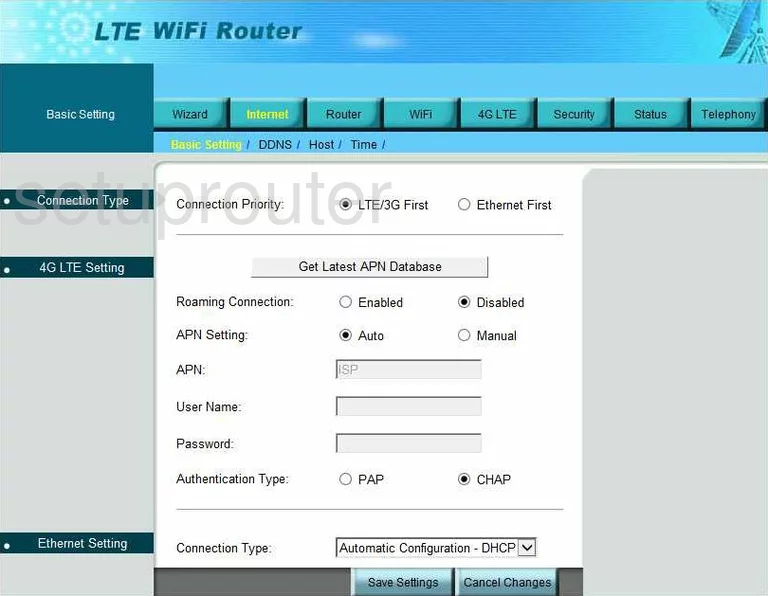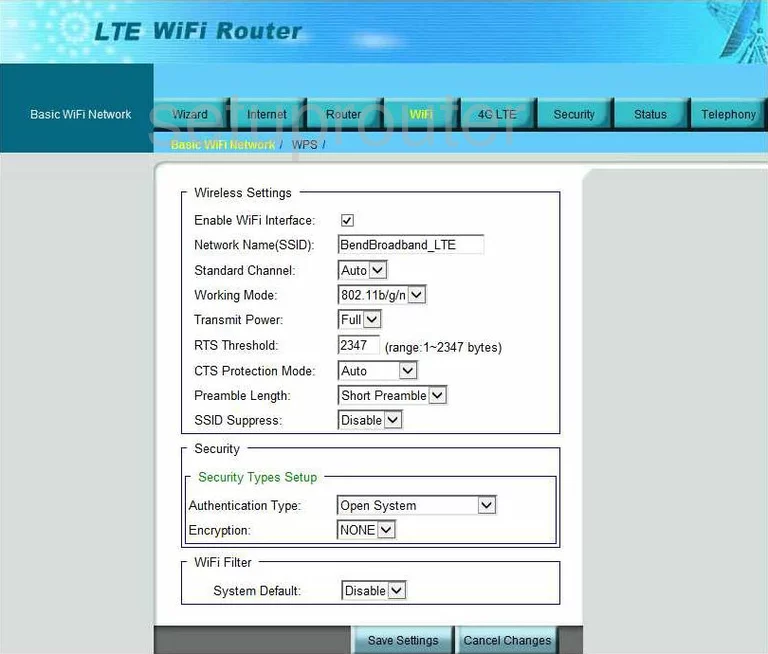The Bandluxe R505 router is considered a wireless router because it offers WiFi connectivity. WiFi, or simply wireless, allows you to connect various devices to your router, such as wireless printers, smart televisions, and WiFi enabled smartphones.
Other Bandluxe R505 Guides
This is the wifi guide for the Bandluxe R505. We also have the following guides for the same router:
- Bandluxe R505 - Bandluxe R505 User Manual
- Bandluxe R505 - How to change the IP Address on a Bandluxe R505 router
- Bandluxe R505 - Bandluxe R505 Login Instructions
- Bandluxe R505 - How to Reset the Bandluxe R505
- Bandluxe R505 - Bandluxe R505 Screenshots
- Bandluxe R505 - Information About the Bandluxe R505 Router
WiFi Terms
Before we get started there is a little bit of background info that you should be familiar with.
Wireless Name
Your wireless network needs to have a name to uniquely identify it from other wireless networks. If you are not sure what this means we have a guide explaining what a wireless name is that you can read for more information.
Wireless Password
An important part of securing your wireless network is choosing a strong password.
Wireless Channel
Picking a WiFi channel is not always a simple task. Be sure to read about WiFi channels before making the choice.
Encryption
You should almost definitely pick WPA2 for your networks encryption. If you are unsure, be sure to read our WEP vs WPA guide first.
Login To The Bandluxe R505
To get started configuring the Bandluxe R505 WiFi settings you need to login to your router. If you are already logged in you can skip this step.
To login to the Bandluxe R505, follow our Bandluxe R505 Login Guide.
Find the WiFi Settings on the Bandluxe R505
If you followed our login guide above then you should see this screen.

You begin on the Basic Setting page of the Bandluxe R505 router. To setup your WiFi, click the link at the top of the page labeled WiFi. Then below that, choose Basic WiFi Network.
Change the WiFi Settings on the Bandluxe R505

The first thing you need to change on this page is the Network Name (SSID). This is referring to the name you give your wireless network so you can identify it when you want to access it. Create an original name without any personal information. For a great guide, check out Wireless names.
Next is the Standard Channel. This only needs to be changed if you are not on channel 1,6, or 11. In the United States there are 11 channels to choose from. Of these 11 channels there is only room in the spectrum for three channels that do not overlap each other, channels 1,6, and 11. Overlapping channels cause interference. Sharing a channel on the other hand does not. For more information on why you should only be using these three channels, check out our guide titled WiFi channels.
Under that is the Working Mode. This is referring to the devices you are running on your network. The slowest and oldest is 802.11a and 802.11b, these were made in approximately 1999-2003. If you have devices made between 2003-2009, it is most likely 802.11g. From 2009-2012 they make 802.11n devices. If they are newer than that they may be 802.11ac but will work with 802.11n. Since the age of most of your devices are varied we recommend using 802.11b/g/n.
The next thing you need to change is the Authentication Type. This is the type of security you are going to be using for your network. The best and newest security protocol is WPA2. In the drop down menu it may read either WPA2-Personal or WPA2-PSK. For a detailed guide on the differences of the security protocols, check out my guide titled WEP vs. WPA.
Use the Encryption drop down list to choose AES. This is referring to how you will encrypt your private information while transmitting it over the airwaves. AES is considered uncrackable at the moment. TKIP has some pretty big flaws making it much less secure.
The one thing missing on this page is the Pre-Shared Key or Passphrase. I suspect that when you choose WPA2 with AES encryption the Passphrase box appears. In this box you need to enter a strong password of at least 20 characters. Avoid using any personal information here. You should also avoid using any word found in a dictionary. I do recommend using symbols, capital letters, and numbers in the password. For help in creating a strong password that is memorable, check out my guide titled Choosing a strong password.
Click the Save Settings button before you exit. Congratulations, your WiFi is now more secure.
Possible Problems when Changing your WiFi Settings
After making these changes to your router you will almost definitely have to reconnect any previously connected devices. This is usually done at the device itself and not at your computer.
Other Bandluxe R505 Info
Don't forget about our other Bandluxe R505 info that you might be interested in.
This is the wifi guide for the Bandluxe R505. We also have the following guides for the same router:
- Bandluxe R505 - Bandluxe R505 User Manual
- Bandluxe R505 - How to change the IP Address on a Bandluxe R505 router
- Bandluxe R505 - Bandluxe R505 Login Instructions
- Bandluxe R505 - How to Reset the Bandluxe R505
- Bandluxe R505 - Bandluxe R505 Screenshots
- Bandluxe R505 - Information About the Bandluxe R505 Router